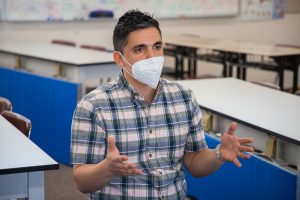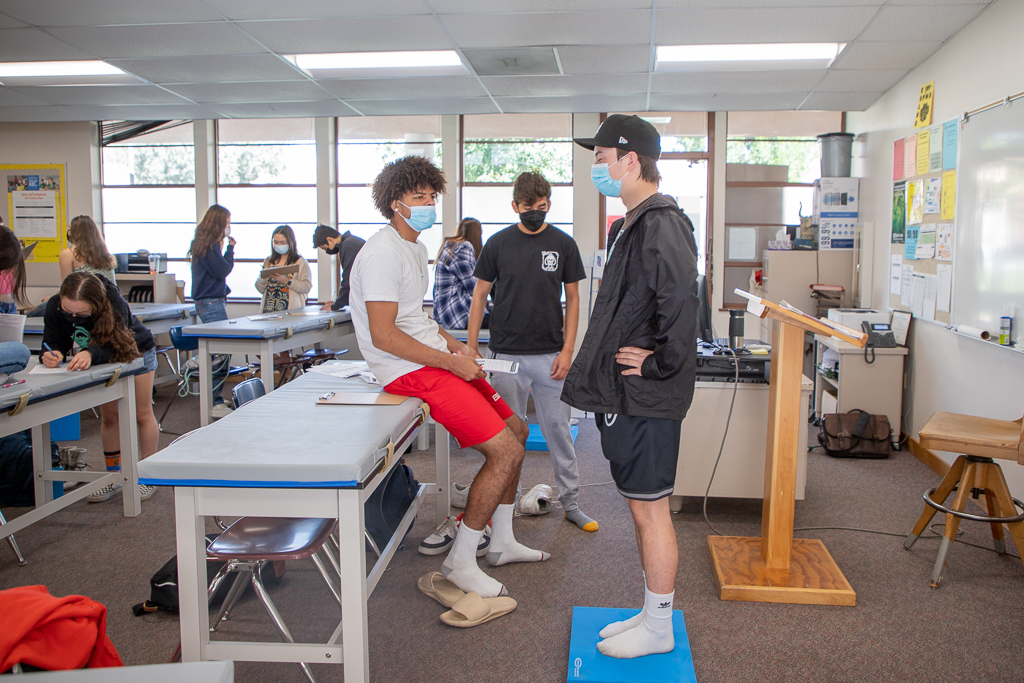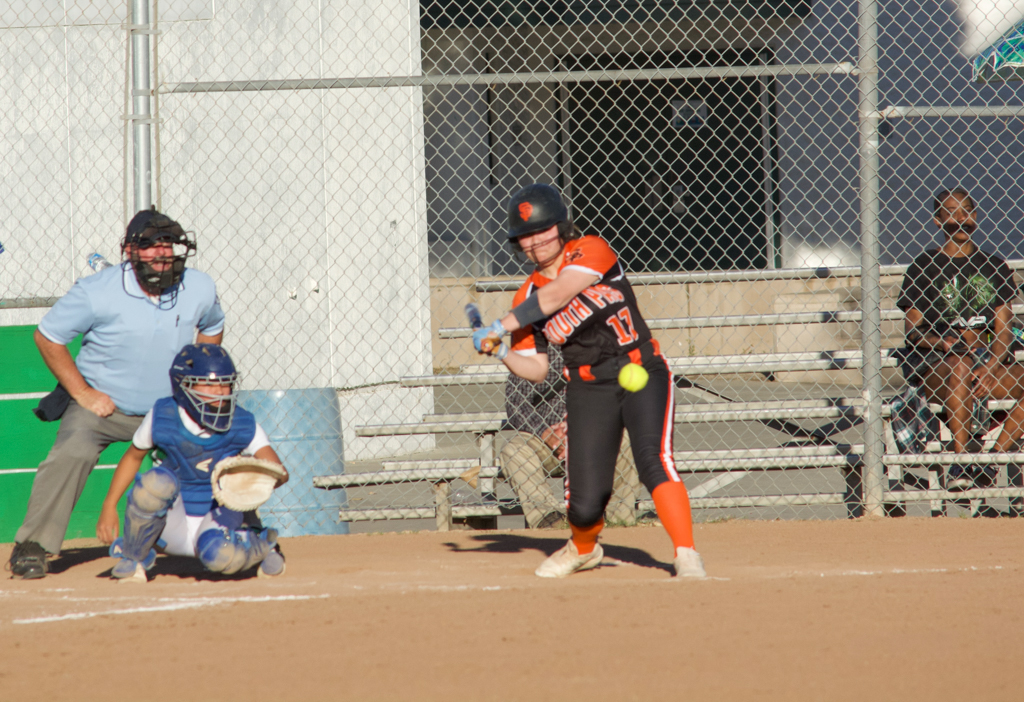Story by Hanna Bae
Staff Writer
Photos by Erin Lee
Staff Photographer
First established four years ago, the Sports Medicine course at SPHS comprises two classes this year, but hopes to grow in the upcoming years. Taught by Andre Zumaeta, the class is meant to encompass the entirety of the healthcare field, but is tailored mostly to sports-related injuries.
In the course, students learn how to treat wounds, respond to emergencies, and evaluate concussions. In addition, they also learn about the anatomy of the skeletal and muscular systems while also being introduced to a large range of careers in the sports medicine field such as orthopedic surgeon and physical therapist.
Class units are broken down into certain areas of the body: injuries in the ankle, knee, hip, shoulder, arm, and more. Students generate strategies and protocols on how to assess and diagnose injuries.
In the classroom, desks are set up in teams of three. More than half of the tables are larger and accompanied by a foam mattress, that is meant to be used as a treatment table. These are laid on the table so that students are able to complete physical examinations on dummies and each other. Diagrams of the muscular system and a close-up model of the skeletal system are both seen on the whiteboard, alongside notes from the previous lecture.
The class offers a wide array of hands-on activities, such as mock physical examinations for certain injuries and areas on the body, CPR simulations on dummies, and more.
Students are often seen moving outside of the classroom for assessments and walk-throughs. Students also helped participate in the creation of the school’s potential new emergency action plan in the event of a sports-related emergency.
“I love how hands-on the class is, it teaches me so much more and allows me to remember things a lot faster,” senior Alyssa Sokolow said. “We do hands-on assessments which I think is super fun and different…. We [also] did a walk around the school about safety.”
Class periods typically consist of a warm up, a lecture, and then a more hands-on activity. They differ from day to day, but in some class periods there are skill labs, or practical activities that help students apply procedures, a variety of projects, and written and practical assignments students complete in teams with classmates.
“It’s a team-oriented atmosphere. If you look at the tables, there are teams of three, and they work as a team on a lot of assignments,” Zumaeta said. “There is independent work to be done in the class but a lot of the work that we do like the skill labs and projects, even some assessments, they work as a team.”
In the emergency procedures unit, for example, students come up as a team and are presented with an emergency patient scenario such as an unconscious or seizing patient. Students are then tasked to come up with a strategy to respond to the emergency together.
“[I love] teaching, I love all the units, just the teaching and having students understand and get skills that they can rely on is really rewarding, it’s something that I really enjoy,” Zumaeta said. “And plus, I’m teaching my craft. So yeah, it’s fun all around. It’s fun for me, it’s fun for them.”

Students often join the class for reasons that range from an interest in sports-related injuries and to also earn health certifications. By learning how to approach certain situations and injuries, students are able to earn their CPR and First Aid certifications.
“I joined the class because I’ve gotten sports-related injuries in the past and I wanted to get more knowledge on the subject,” senior Isabella Wada said. “I plan on taking similar classes in [college] as well. I really enjoy this class as I’ve learned so many new things about sports-related injuries and how to treat them.”
Zumaeta emphasized that much of the information learned in class can be used during medical emergencies. He even recalled a student who was present when one of their family members experienced a seizure and used class knowledge to help assess the situation properly.
“They thanked me for teaching the material because [their] family was faced with an emergency situation and [they were] able to respond to it,” Zumaeta said. “Nobody else knew how to react to it, but this individual knew how to, and was able to respond….Stories like that really make a difference.”
Students are able to sign up for the class during routine course programming, which is currently happening. The Sports Medicine class is available to all incoming sophomores, juniors, and seniors, and the Advanced Sports Medicine class is available for incoming juniors and seniors who have taken the Sports Medicine class previously.



